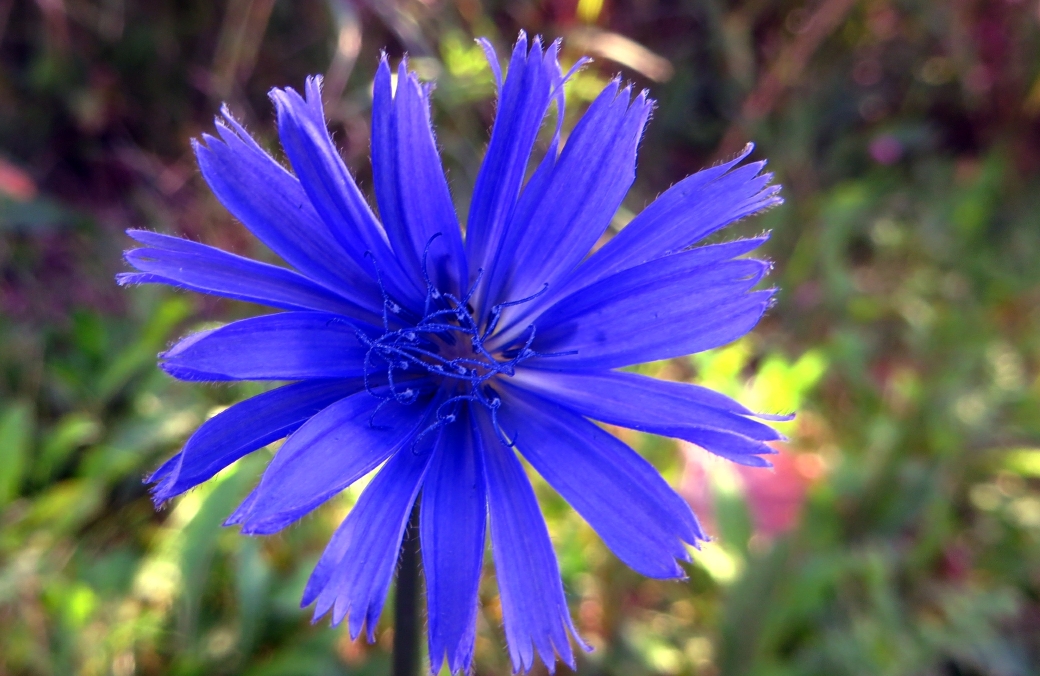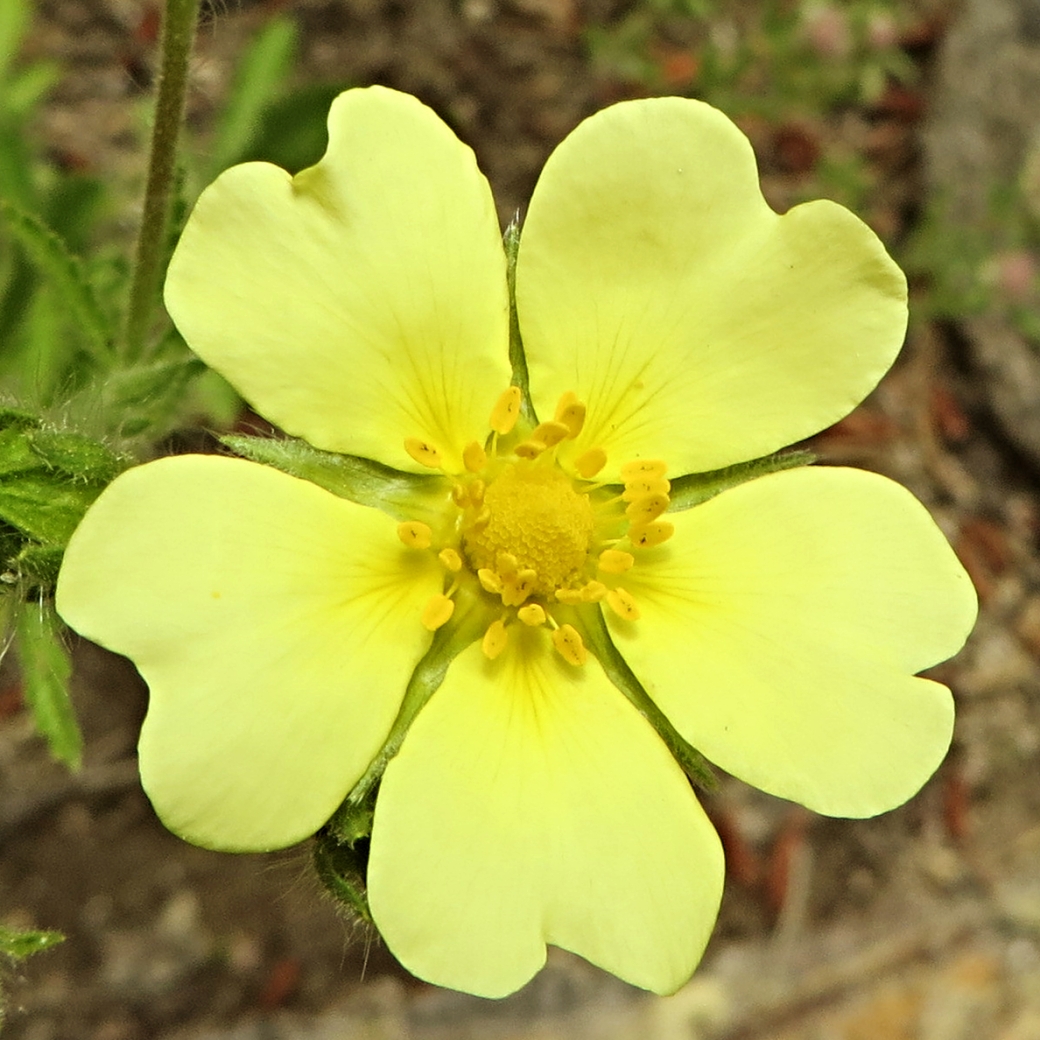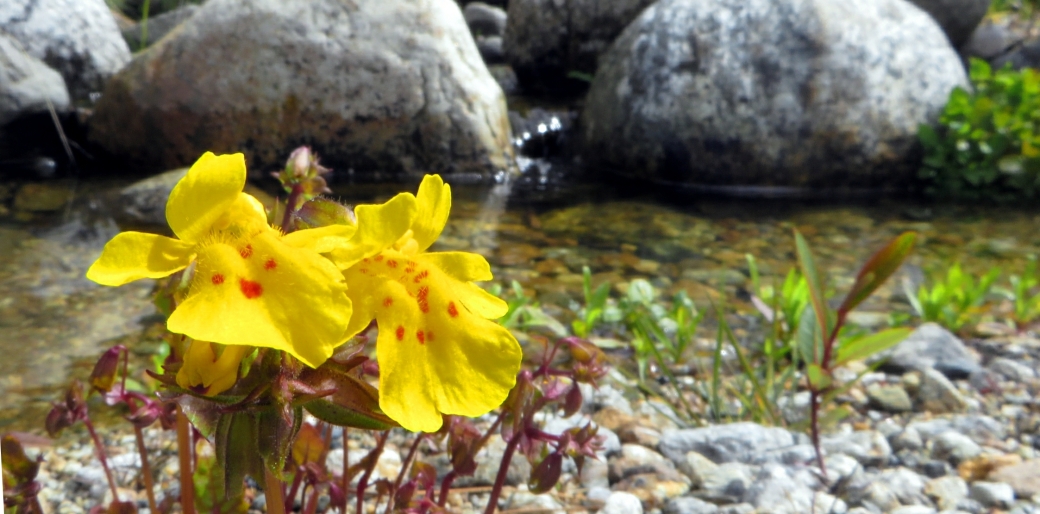Wednesday’s Photos
Wild Flowers of the Arrow Lake Region Part II
Today I ask my blogging friends to help me identify the two last flowers on the display below. The very common cornflower is making its appearance in late summer in the Arrow Lake valley. The oxeye daisy is a very invasive plant that is taking over large tracts of land and even though quite pretty are not welcome by the ranchers. The rare and beautiful foxglove is poisonous and children should be warned not to touch it. I would appreciate very much if you could help me with the last two flowers. Enjoy.





Sorry I cannot ID them, but these are great photos – – like Hollywood posters. I do remember my grandmother, who always grew foxgloves, warning us about not fooling with them, and “digitalis” is easy to remember, in a family full of relatives with pacemakers, etc.
LikeLiked by 1 person
Robert, I am so glad you liked the photos. Perhaps I should not have asked to ID the last two photos, but the fourth one is such a great example of perfect symmetry, it would be nice to know its name.
LikeLiked by 1 person
Beautiful flowers. Sorry I cannot help in the identification of the last two.
LikeLiked by 1 person
Thank you! Flowers are just one aspect of the wealth and wonders of God’s creation.
LikeLiked by 2 people
You are welcome!
LikeLiked by 1 person
Hi Peter!
Die ultimate Blüte! Immer wieder superschön. Besonders 1,2 und 4. 3 ist schön aber wohl giftig, 5 zu klein……, aber lieb. Insgesamt eine feine Mischung – wie im richtigen leben.
Liebe Grüsse aus dem frühherbstlichen Mittelschweden. Ruth
LikeLiked by 2 people
Entschuldige bitte, liebe Ruth, dass ich deinen Kommentar so spät beantworte. Ja, du hast recht der Fingerhut ist sehr giftig, aber ist eine absolute Schönheit.
Es ist zum Glück noch nicht Herbst bei uns, aber das kühle Wetter ist auch bei uns eingezogen und hilt den Leuten beim Kampf gegen die Waldbrände. Herzliche Grüße! Peter
LikeLiked by 1 person
The last one looks like a sort of orchid. Sorry that I can’t do better than that. Wonderful pictures as always.
LikeLiked by 2 people
I also think that the last is an orchid …
LikeLiked by 2 people
See comment elsewhere, Brigit.
LikeLike
Thanks for trying and for the compliment!
LikeLiked by 1 person
Number four looks like a Sulphur cinquefoil.
LikeLiked by 1 person
Right on, my friend!
LikeLike
Hallo Peter, ich habe mit Edda beim Frühstück diskutiert und wir sind zu der Meinung gelangt, dass die Nr.4 ein Hahnenfuß-Gewächs ist, bei uns “wolliger Hahnenfuß” oder botanisch “Ranunculus lanuginosus”.
Deutliches Kennzeichen ist die wollige Behaarung, hast Du dazu ein Bild der ganzen Pflanze ?,man kann bei Dir schon die Behaarung ahnen!
Auf Hahnenfuß würden wir uns festlegen.
Nr.5 scheint eine Orchidee zu sein, genaueres vielleicht später.
Liebe Grüße an Euch
Dieter
LikeLiked by 1 person
Lieber Dieter, mittlerweile war hier bei den Kommentaren so allerlei los. Dabei habe ich noch nicht mal einen Preis für die richtige Lösung ausgesetzt. Haha!
Am besten geht ihr beide mal durch die Kommentare. Ich neige dazu, dass das vierte Bild im Englischen natürlich eine Cinquefoil (Fingerkraut) ist und das letzte Bild das Heilkraut Mimulus darstellt. Vielen Dank und Gruß aus dem nun endlich kühlen Kanada!
LikeLike
Wildblumen können so schön sein, nicht wahr? Du hast sie auch so schön fotografiert! Ich lasse manche in meinen Blumenbeeten stehen, z. B. die wilden Margheriten.
Ich schliesse mich meinen Vorrednern an, Hahnenfussgewächs und Orchidee. Bei uns ist der Hahnenfuss mehr so sattgelb und glänzend. Deiner hat so eine schöne zarte Farbe. Viele Pflanzen haben wir doch gemeinsam.
Unter “wild flowers Canada” tauchen sie leider nicht auf, die angeblichen Orchideen.
LikeLiked by 1 person
Also Brigit, du hast ganz recht, die letzte Blume ist auf keinen Fall ein Orchidee, das hat Susan aus der UK schon richtig festgestellt. Von meiner Jugendzeit in Deutschland erinnere ich mich noch an die Butterblume, die der Cinquefoil im Aussehen sehr nahe kommt. Best wishes! Peter
LikeLiked by 1 person
I am afraid that I cannot help identify the flowers, but a friend recently told me about an app called Picture This that identifies plants and trees by focusing your camera on them. Maybe try that? In any event, these are gorgeous photos!
LikeLiked by 1 person
Sorry—Picture This Plant
LikeLiked by 1 person
Thanks for the compliment and the tip, Amy! I will definitely have a look at the app Picture this Plant.
LikeLiked by 1 person
Hallo Peter,
Habe zu Nr.5 keinen Erfolg gehabt, ich möchte auf den folgenden Link hinweisen
https://pflanzenbestimmung.info/eschscholzia-californica/
Das heißt Kalifornischer Mohn bzw. Schlafmützchen 😉
Gruß Dieter
LikeLiked by 1 person
I’m sorry I can’t identify the flowers, but I DO admire them for their beauty. Wonderful pictures: thanks!
LikeLiked by 1 person
That’s OK, Pit. As I mentioned to some of the other commentators, it was partially my fault by posting the flowers way too small on the last picture. Best wishes and thanks! Peter
LikeLike
Well, it’s not the size of the pictures, Peter, it’s just my extremely limited knowldge of biology.
LikeLiked by 1 person
I have no clue about it but the daisy against the sky is beautifully shot!
LikeLiked by 1 person
Thank you, Arv! I like that one too.
LikeLiked by 1 person
🙂
LikeLike
Ihr habt ja wunderschöne Pflanzen in Canada. Wir haben uns auch den Kopf zerbrochen, kennen die Pflanzen aber leider auch nicht. Liebe Grüße aus dem warmen Hamburg, Mitza
LikeLiked by 1 person
Kein Problem, liebe Mitza! Die Aufgabe war nicht leicht, besonders das letzte Bild hat viel Kopfschmerzen bereitet. Aber das war auch meine Schuld, da das Bild von den Blumen viel zu klein war. Endlich kühles Wetter hier!
LikeLiked by 1 person
Beautiful shots, as usual Peter. I am not really sure with my guess, but it seems number four looks like coming from ‘Forget me Not’ Family. The color is different, but the shape looks the same. I found it in this web, http://theseedsite.co.uk/boraginaceae.html
LikeLiked by 1 person
Thank you, Nurul, for trying to identify the flowers. Have a look around at the comments. Like you many tried hard to help me. In the end it was a specialist in flowers and plants who found the right names. Thank you, Nurul, for the compliment! It is very much appreciated.
LikeLike
By the way, thanks for the link. The blue flower has the same shape as the yellow cinquefoil.
LikeLike
Just guesses, but the bottom flower looks like mimulus, possibly guttatus and the one above, a cinquefoil.
LikeLiked by 1 person
Thank you, Susan, for identifying the flowers. Someone else already identified the cinquefoil. It is an invasive plant in BC. I believe you are right about the mimulus. I visited briefly your blog and found that our interests have a lot in common. So I followed you. Have a great day, Susan!
LikeLiked by 1 person
Hallo Peter, Ich habe auch gleich auf auf eine Art von Butter Blume getippt, so wie ich sie aus Deutschanlnd noch kenne. Thank you sharing the glory of nature in your wonderful images.
LikeLiked by 1 person
Sehr schön, Peter!
Das 1. und 3. sind meine Favouriten.
Beim 1. Bild fragt man sich, wieso das Blau in wirklich jedem Detail der Blüte vorhanden ist.
LikeLiked by 1 person
Es freut mich, dass dir die Bilder gefallen haben.
LikeLiked by 1 person
The flowers and colors took my breath away. I love the offerings of nature. Gorgeous views of the land. Lucky you!
LikeLiked by 1 person
Oh, thank you, Mary Ann, for your kind compliment!
LikeLiked by 1 person
My pleasure Peter. When do you normally get your first frost of the season? I recall when one of my sisters lived in Alaska and had her garden, she harvested the tomatoes green and ripened them in brown paper bags. Snows and cold came early there.
LikeLiked by 1 person
We live in a so-called temperate climate zone only 600 miles from the Pacific. So our winters are relatively mild and the first frost comes near the end of September. Sometimes we pray for snow at Christmas time. So it is here very different from the harsh climate of Alaska.
LikeLiked by 1 person
Interesting about your climate. You are fortunate. We normally have a white Christmas and lots of Lake effect snow. So do you go to the Pacific when you want the ocean?
LikeLiked by 1 person
Yes, it is a 6 hours drive from where we live. My wife and I go there at least twice a year to breathe in the refreshing ocean air.
LikeLiked by 1 person
The ocean waves are so soothing too. How nice you get there.
LikeLiked by 1 person
Interesting the different names of some plants between your place and mine. I would call the first flower chicory, though I see it’s also known as cornflower. UK wild cornflowers are a similar blue but frillier: https://en.wikipedia.org/wiki/Centaurea_cyanus
Our foxgloves and ox-eye daisies look the same as yours though. I was also going to suggest potentilla for the cinquefoil but now see potentilla is actually the cinquefoil’s genus. So I’ve learn several new things here, Peter. Thank you.
LikeLiked by 1 person
Thanks for some additional insight into the various flowers presented on my post, Tish! Actually the ‘cornflower’ is known in Canada also as chicory, as my wife just informed me. Coming originally from Germany, I looked for the translation of Kornblume and found cornflower as one variant name. My apologies for the confusion I created, Tish.
LikeLiked by 1 person
Lovely pictures as always. I am not a big fan of foxglove and I usually get rid of them as best as I can. My main reason for this is that they’re poisonous as you pointed out and I don’t want them around in the garden or the pasture.
LikeLiked by 1 person
I have the same feelings about the poisonous beauty foxglove. Best wishes! Peter
LikeLiked by 1 person
You’ve likely had the answers…. Chicory is the blue, it’s roots are now used in a lot of food products (Yeah, imagine my surprise finding chicory root in my energy bars.), Daisy is white, Foxglove is the …well… you got it…the last two…a cinquefoil and some kind of orchid.
I’m so knowledgeable.
LikeLiked by 1 person